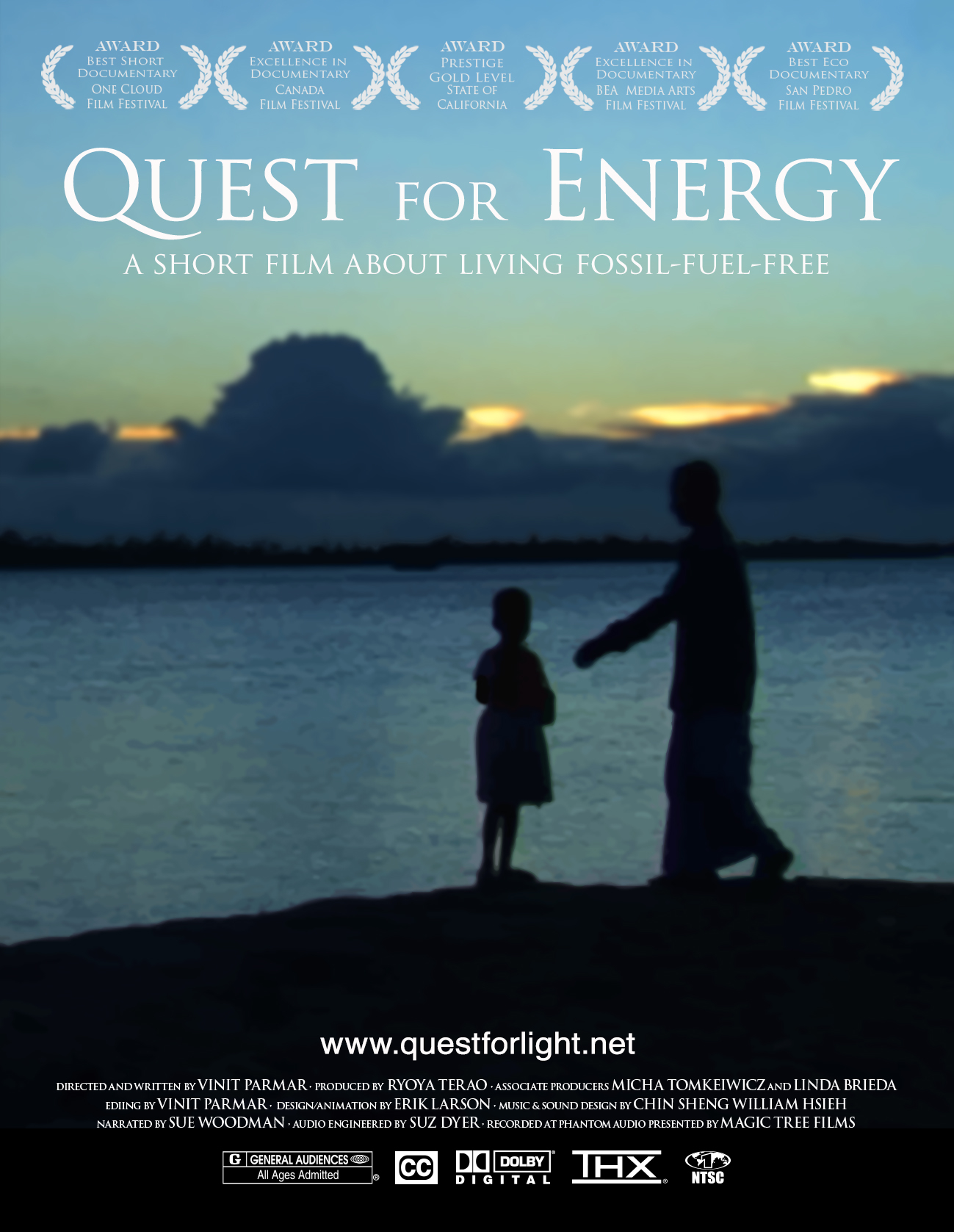View the 10-minute fim for free : Quest for Energy

While 1.3 Billion people in the world still live without electricity, off-‐grid Indian islanders have found sustainable ways to get electricity, leaving no carbon-‐footprint.
Four million off-‐grid Indians are ready to save their precious World Heritage site with sustainable ways of living. They are already living virtually carbon-‐free in the world’s most unique and largest wetland. Two of their islands have vanished because of rising sea levels due to the effects of climate change. Low-‐cost coal or kerosene produces a carbon-‐footprint; fossil fuels are not a viable option. Instead, solar panels, hybrid power plants, and cow manure are local solutions. With 1.3 billion people still looking to get electricity in the world, these sustainable options may just save our planet.
QUEST FOR ENERGY encourages us to think about our energy consumption and way of life to get closer to achieving zero environmental impact. For eons, the residents of this precious and isolated region have survived in the dark, lit by smelly and dim kerosene lamps. They even resort to burning wood to cook. 1.3 Billion people currently live like this around the world. The people of the Sunderbans live less than hundred miles away from Kolkata, India, residing in the largest wetland in the world adjacent to one of the most populated urban areas of the world. The Sundarbans is a World Heritage site that boasts of about two hundred-‐fifty wild, white Bengal tigers. In this region, only fifty-‐two of the hundred-‐two islands are human-‐inhabited. These islanders have witnessed massive flooding and realize their islands will be under water because of rising sea levels from climate change. Two islands recently disappeared. The UN reports that 75% of the landmass will be under water due to climate change. Four million islanders risk losing everything, their homes, farmland, animal stock, and their lives. In the 1990s, the West Bengal government commissioned the West Bengal Renewable Energy Development Agency to electrify its off-‐grid population without contributing to the degradation of the tender wetland ecosystem. Low cost coal is not an option.
The residents voted to acquire clean energy. Now, three of the fifty-‐two occupied islands have electricity from a hybrid mini-‐grid power plant that uses wood to make a biogas, without producing climate-‐changing emissions. Replenishment of used wood through replantation of new trees makes this process sustainable. But, only about six hundred homes enjoy an electrical connection. How about the other forty-‐nine islands? These islanders power their CFL bulbs, fans, television sets, DVD players, cell phones, computers and other appliances from large renewable charged batteries. Solar panels purchased from local solar shops can be seen on rooftops and straw huts. A local hospital’s solar panels has permitted emergency operations using simple lights and modern vital-‐sign machines and cured illnesses by administering vaccines kept in cold storage. For cooking -‐ burning firewood and kerosene, caused burns and even deaths and smoke inhalation problems. Now, manure pits supply ample natural cooking gas from fermented cow manure for a safe and fast cooking experience. It produces zero emissions. Simple sustainable technology has saved lives, and transformed an off-‐grid village into a thriving city of entrepreneurs, bustling with energy, and the conveniences of appliances. Imagine what can be done for the rest of the off-‐grid world, desperate and in the dark.